With Washington’s destruction, Major General Ross could turn his attention to his primary target, Baltimore. The city was a hotbed of privateer activity and Anti-British sentiments. Capture of Baltimore also would cause a ripple effect in the American economy that was crucial for the continued war effort and might tip the negotiations in Gent to favour the British. Ever since the British blockade began in 1813, General Samuel Smith, tasked with the city’s defense had constructed a ring of redoubts and bastions around the city. General Smith had the support of the state government and called out the militia when Ross landed at Benedict, and now the defenses housed an army of 15,000. The inner harbor would be an equally hard nut to crack with landward batteries and at the Center, Fort McHenry.
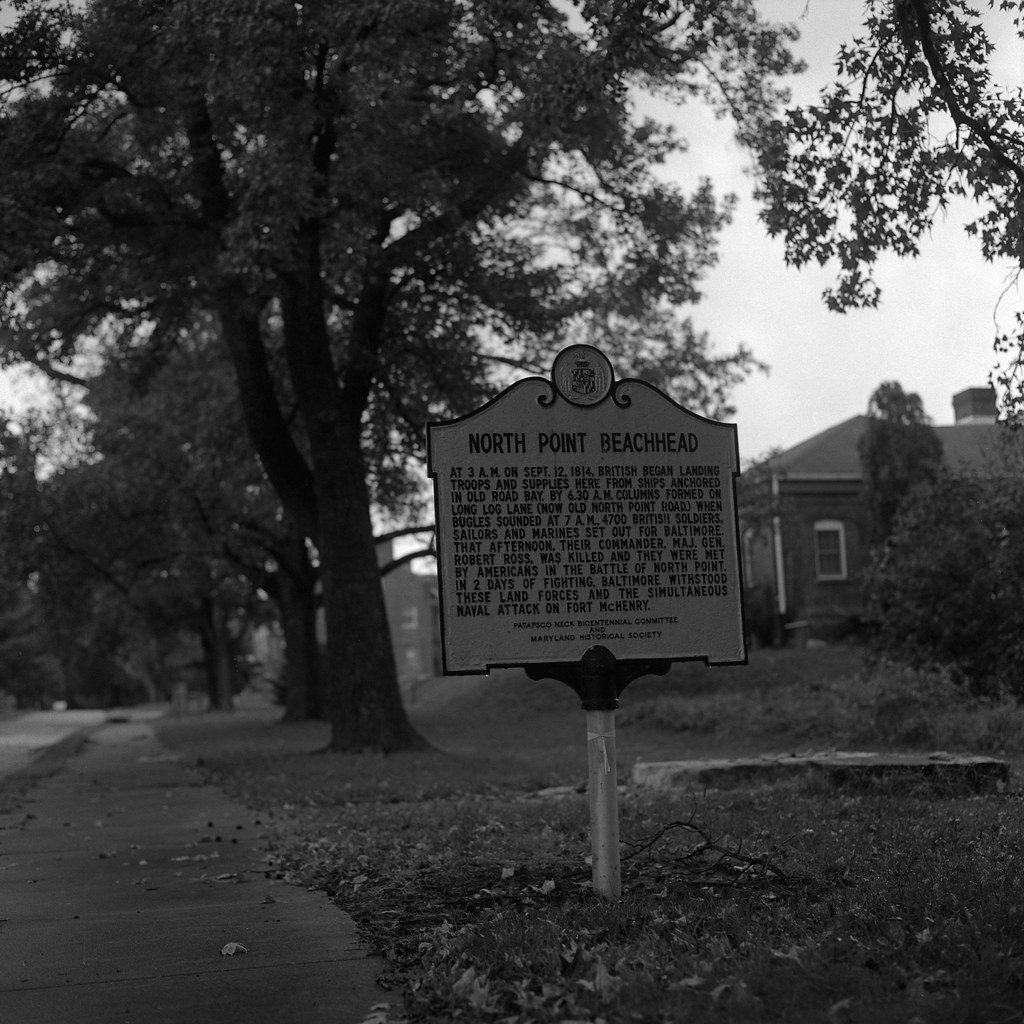
Hasselblad 500c – Carl Zeiss Planar 80mm 1:2.8 – Kodak Tri-X 400 @ ASA-400 – Kodak D-23 (Stock) 7:30 @ 20C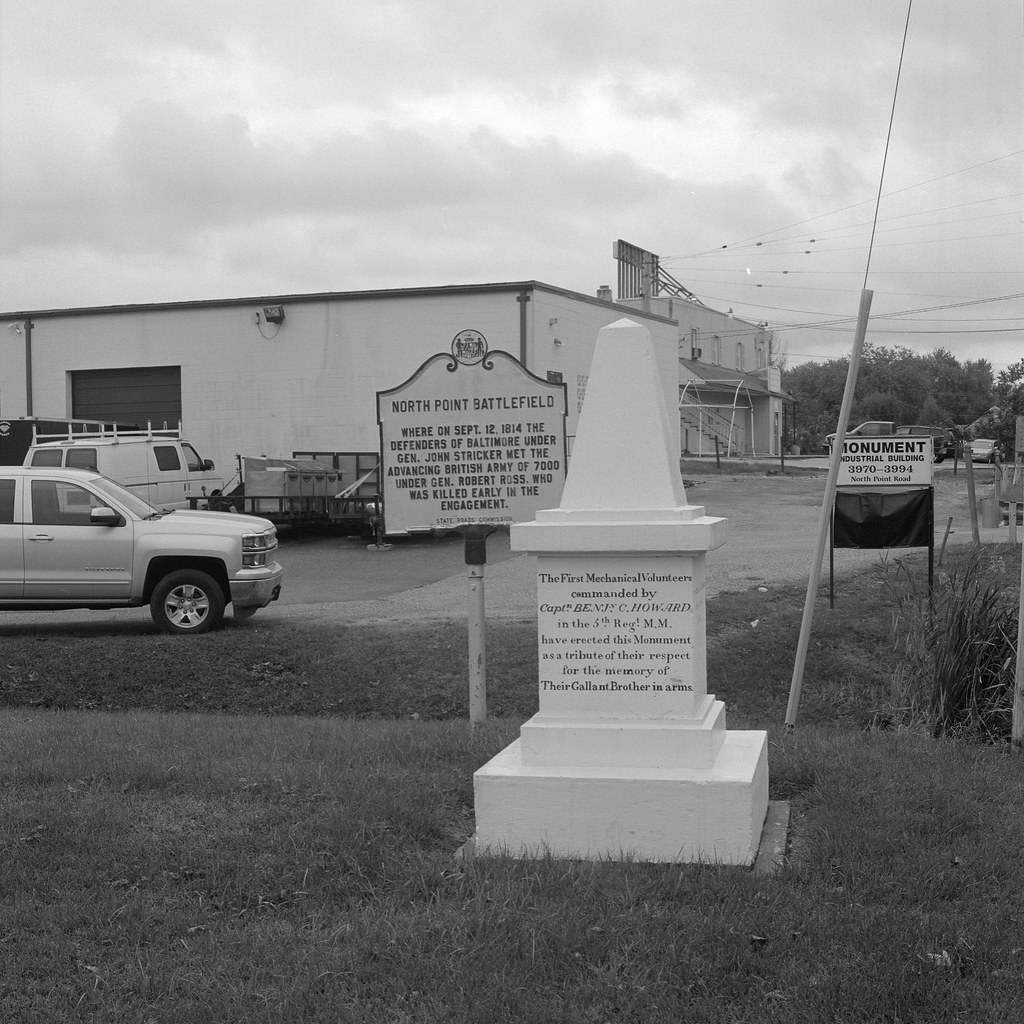
Hasselblad 500c – Carl Zeiss Planar 80mm 1:2.8 – Kodak Tri-X 400 @ ASA-400 – Kodak D-23 (Stock) 7:30 @ 20C
To divert American attention away from Ross’s army, Cockburn landed a small force of sailors and Marines on the eastern shore, only to have it forced back in defeat and did little to dissuade the Americans. With his army recovered Ross landed at North Point on 12 September and marched north. General Smith having learned of the British assault, sent a column of troops under General John Strickler to intercept. Strickler, having learned from the mistakes at Bladensburg, Strickler deployed his men at a choke point, a series of tidal basins and swamps would force Ross to fight on a front only a mile wide, and he hoped to prevent a flanking maneuver. Much to the annoyance of Strickler, the British made camp a short three miles distance for a midday meal. He would have to force the issue. While Strickler held the main body of men back, sending a vanguard of 250 forward to engage the British pickets. He hoped such an act would rattle the British into action. General Ross, upon hearing the musket fire left his meal and rode forward to direct the troops.
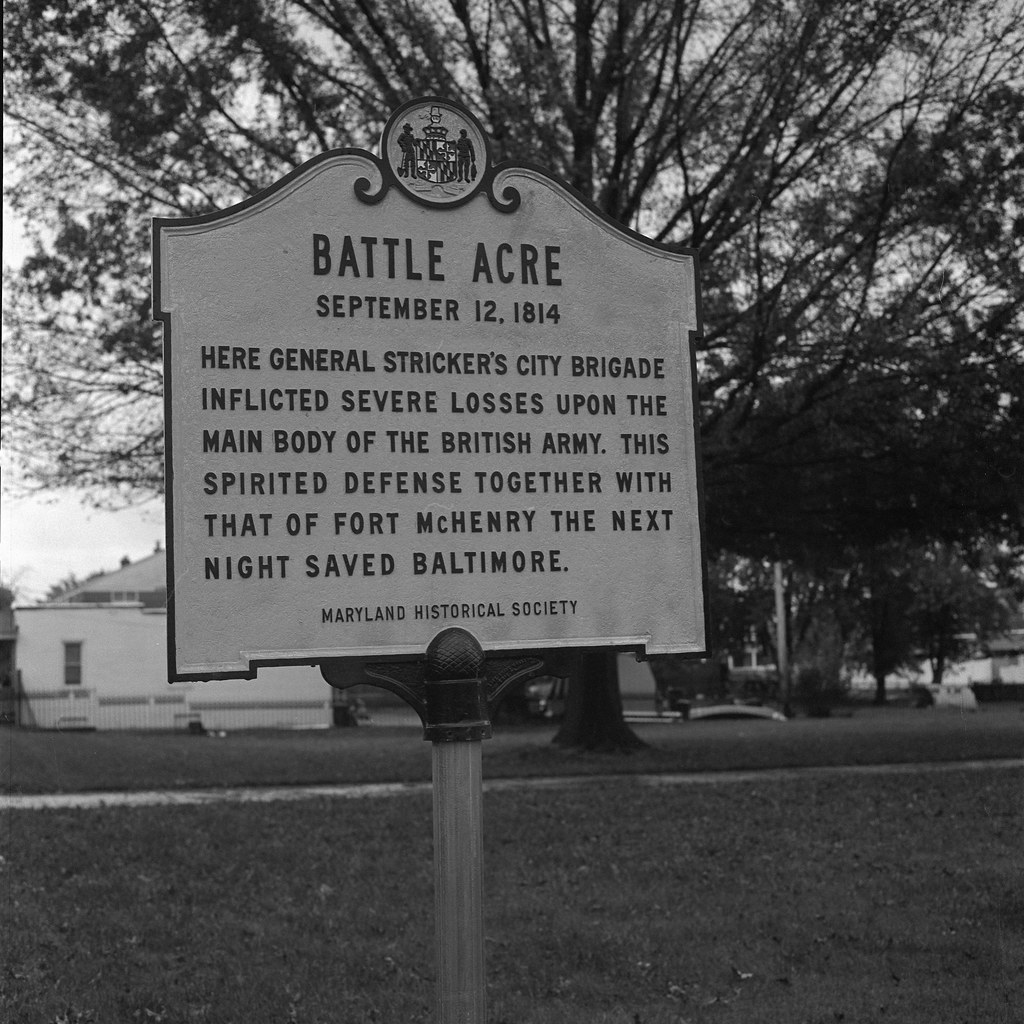
Hasselblad 500c – Carl Zeiss Planar 80mm 1:2.8 – Kodak Tri-X 400 @ ASA-400 – Kodak D-23 (Stock) 7:30 @ 20C
Hasselblad 500c – Carl Zeiss Planar 80mm 1:2.8 – Kodak Tri-X 400 @ ASA-400 – Kodak D-23 (Stock) 7:30 @ 20C
Such an action was typical for the general; Ross was well liked by men and officers under his command for leading from the front. By the time Ross and Cockburn arrived both sides were equally matched and had each other pinned, neither willing to move. Cockburn in a strange turn suggested caution and wait until the main army could be brought up. Ross agreed and made to wheel around to ride back and lead the men forward. An American sharpshooter had taken aim against the General, and a bullet caught Ross and dropped the general. Local legend attributed the death to Daniel Wells or Henry McComas. However, there’s no evidence to support it was either of them. Ross’s final action was to turn over the army’s command to Colonel Arthur Brooke. Brooke pushed forward, engaging Strickler’s main force at Battle Acre. By 3 pm, the 4th had fought around and managed to flank the American line; Strickler ordered a retreat. Unlike Bladensburg, the Americans fell back in good order to the main line at Roger’s Bastion. Knowing that such an assault would be suicide Brooke held a few miles south and sent word to the main British fleet that they would need help if they were to break through. And for the British fleet they knew they had to take out Fort McHenry.
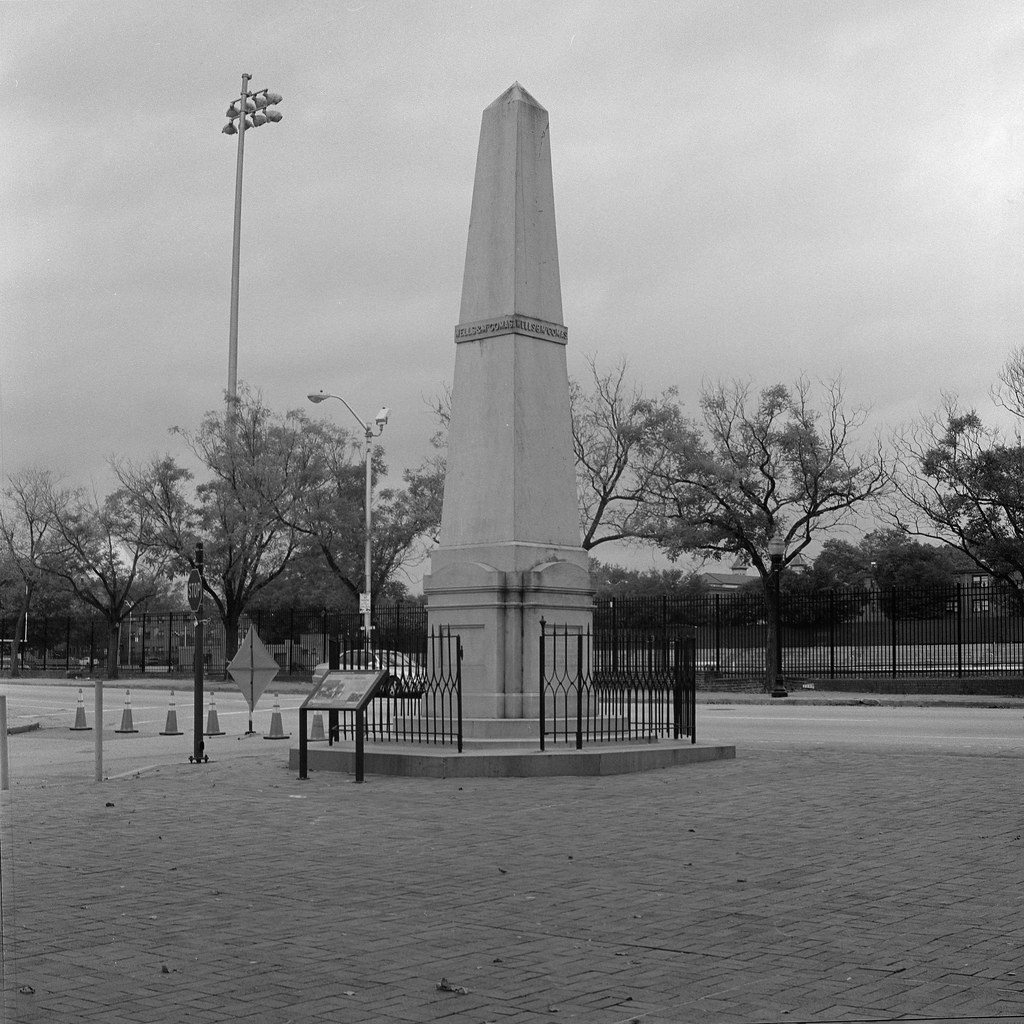
Hasselblad 500c – Carl Zeiss Planar 80mm 1:2.8 – Kodak Tri-X 400 @ ASA-400 – Kodak D-23 (Stock) 7:30 @ 20C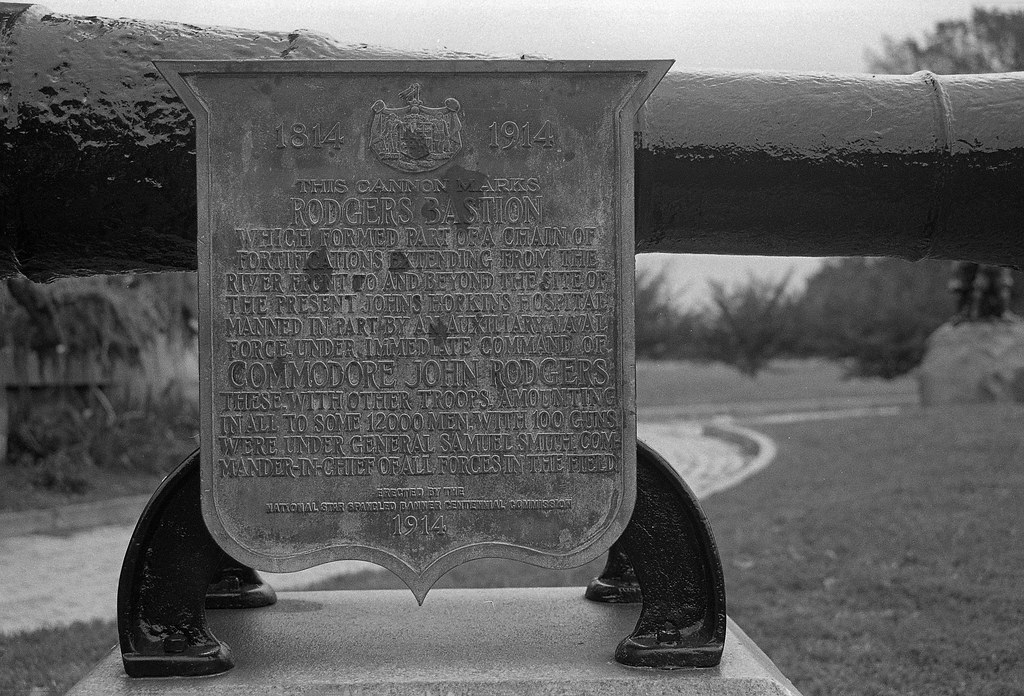
Minolta Maxxum 700si – Maxxum Zoom AF 35-70mm 1:4 – Eastman Double-X (5222) @ ASA-200 – FA-1027 (1+19) 10:00 @ 20C
Vice Admiral Alexander Cochrane having arrived from a successful capture of eastern Maine ordered a squadron of ships to bombard the American fort. The squadron consisted of HM Rocketship Erebus (26), HM Bombship Terror (2), HM Bombship Volcano (16), HM Bombship Meteor (12), HM Bombship Devastation (8), and HM Bombship Atena (10). And in the early hours of the 13th began a devastating bombardment in a hope to the fort up to a land assault by Royal Marines. The fort’s commander, Major George Armistead, worked hard to ensure the fort’s protection. He had the powder stores moved to a secure location at the far end of the fort. He also ordered that the small storm flag remains flying all through the night. From the harbor, an American Lawyer, Francis Scott Key, would observe the bombardment from a British Ship. He had been sent to secure the release of some American prisoners.
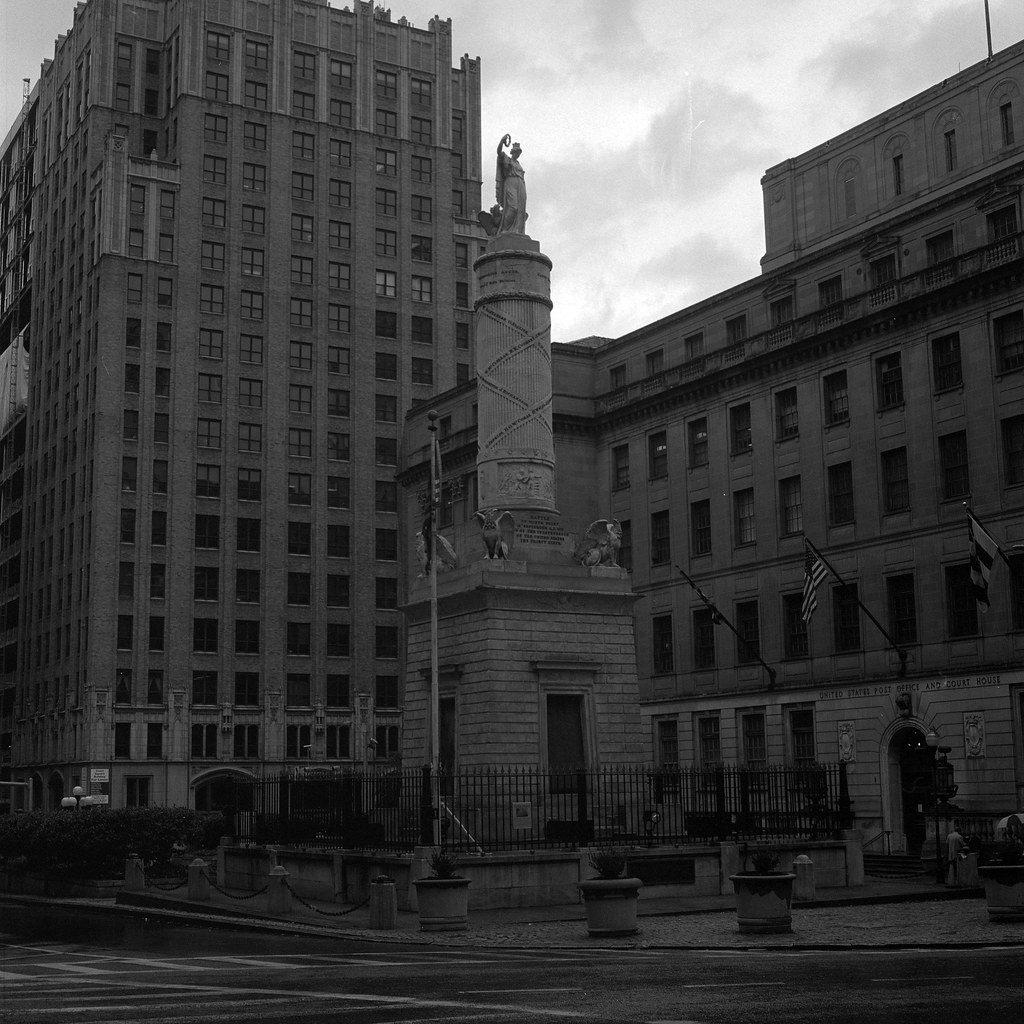
Hasselblad 500c – Carl Zeiss Planar 80mm 1:2.8 – Kodak Tri-X 400 @ ASA-400 – Kodak D-23 (Stock) 7:30 @ 20C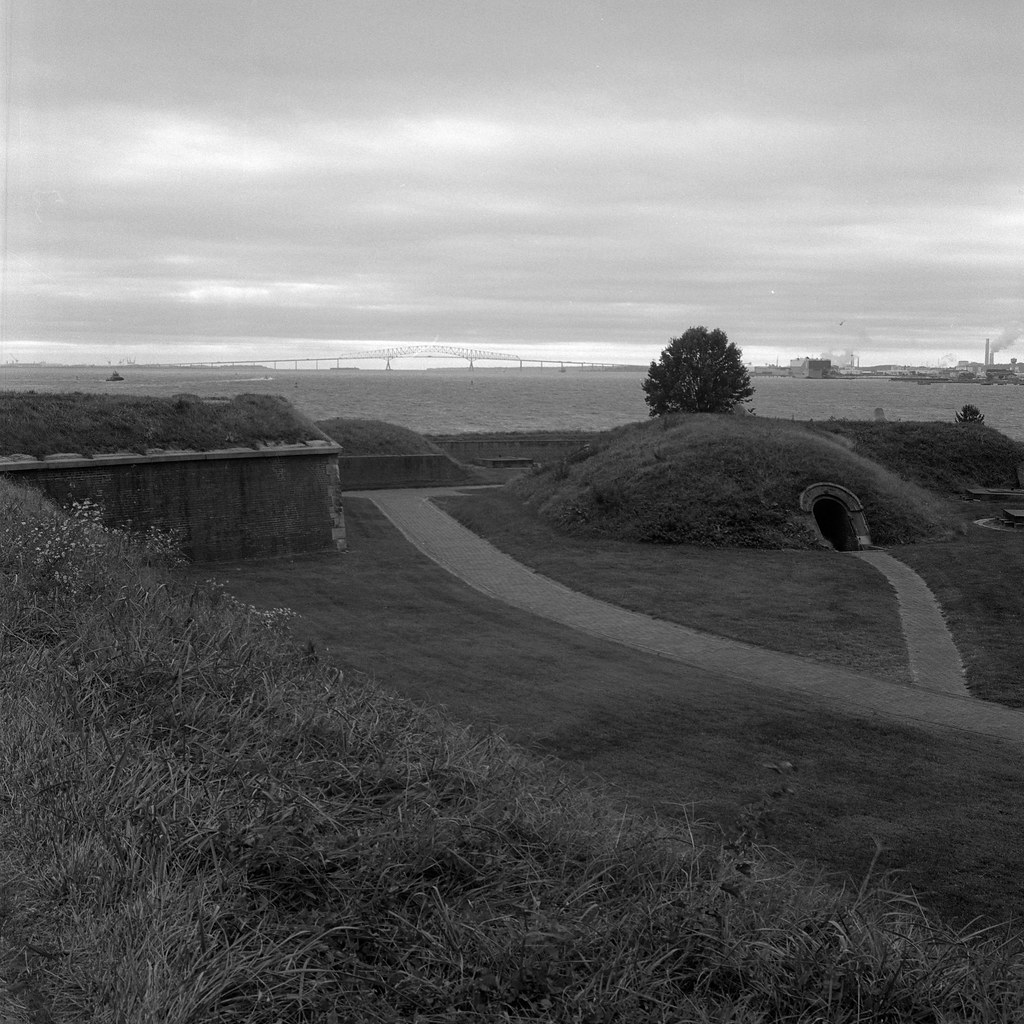
Hasselblad 500c – Carl Zeiss Planar 80mm 1:2.8 – Kodak Tri-X 400 @ ASA-400 – Kodak D-23 (Stock) 7:30 @ 20C
Major Armistead efforts were not in vain, during the devastating bombardment did little against Fort McHenry. Expanded defenses and the range of the ship limited American casualties to 4 dead and over 20 wounded. Out of 2,000 projectiles fired only 400 hit the target. As dawn rose on the 14th, twenty-five hours later, Armistead ordered the massive 30-foot by 40-foot garrison flag hoisted. Francis Scott Key moved by what he had witness began working on a poem. Having failed to break through, Cochrane sent word to Brooke and left the final choice in the next move up to the colonel. Brooke ordered a general retreat and pulled the troops back and reembarked. The Americans had prevailed. For the British, the loss of General Ross was devastating, and would only create more problems as the fleet headed south to disrupt American trade in the Gulf of Mexico. In the days that followed, Francis Scott Key’s poem, the Defense of Fort M’Henry, began to circulate in local newspapers. The bombardment had one final casualty, three years later, George Armistead, now a Lieutenant-Colonel, passed away due to the stress the bombardment took on his mind and body, today it would be considered post-traumatic stress disorder.

Sony a6000 – Sony E PZ 16-50mm 1:3.5-5.6 OSS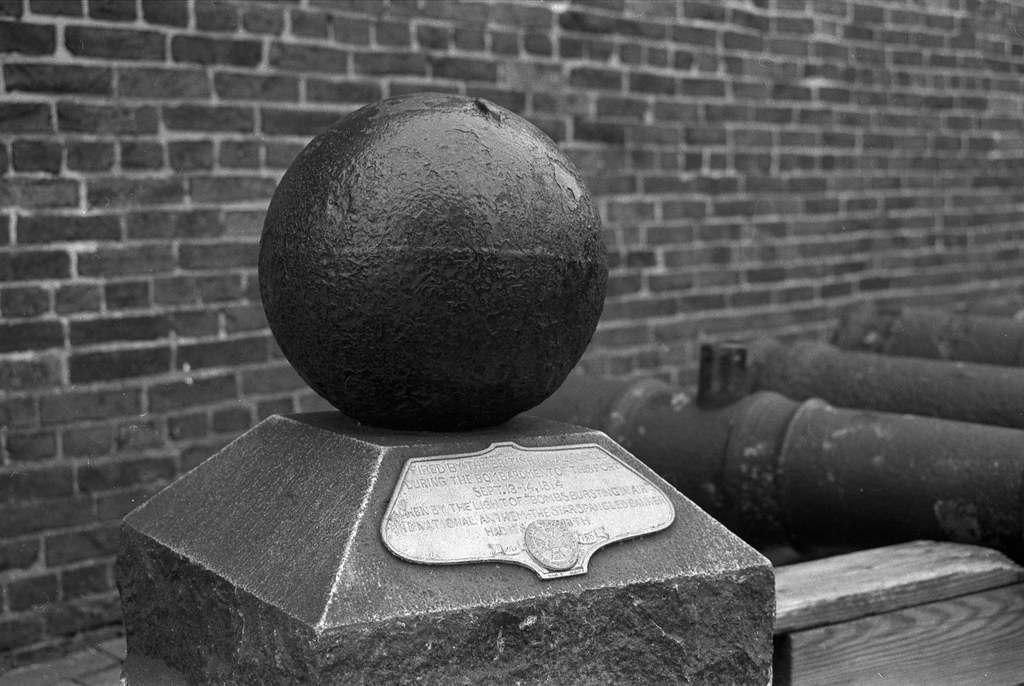
Minolta Maxxum 700si – Minolta Maxxum AF 35-70mm 1:4 – Eastman Double-X (5222) @ ASA-200 – FA-1027 (1+19) 10:00 @ 20C
The bombardment of Fort McHenry and the repulse of the British at Baltimore was one of two battles that created the American mythos that surrounds the war, the other being the Battle of New Orleans. Just as the Battle of Queenston Heights and the Battle of Beaver Dams forms the Canadian mythos of the war. Both sides maintain their victory over the other because of these actions. Key’s poem was set to music and in 1931 was declared the national anthem of the United States of America. A national anthem that today has become a center of controversy among athletes. Fort McHenry stands today as a historical monument and national shrine and has the honour of flying the first of every modern version of the American flag. Armistead’s ‘star-spangled banner’ would stay in his family for many years before becoming a part of the Smithsonian collection in 1912 and can be viewed in fully restored glory in the Museum of American history. Markers at North Point (now Fort Howard) and along the route mark the spot of the British Landing, Ross’s death, and the battle. Roger’s bastion is marked by a plaque in Point Pleasant Park. Three additional monuments stand in Baltimore related to the battle. General Ross would be carried back to Halifax where he remains in the old Burying Ground, Armistead was buried in Baltimore at St. Paul’s Cemetery. Special thanks to Christopher T. George for helping me out in pinpointing some of the locations for this post.
Written with Files from:
Collins, Gilbert. Guidebook to the Historic Sites of the War of 1812. Toronto: Dundurn, 2006. Print
Hickey, Donald R. Don’t Give up the Ship!: Myths of the War of 1812. Urbana: U of Illinois, 2006. Print.
Hickey, Donald R. The War of 1812: A Forgotten Conflict. Urbana: U of Illinois, 1989. Print.
Lossing, Benson John. The Pictorial Field-book of the War of 1812 Volume 2. Gretna, LA: Pelican Pub., 2003. Print.
Berton, Pierre. Flames across the Border, 1813-1814. Markham, Ont.: Penguin, 1988. Print.